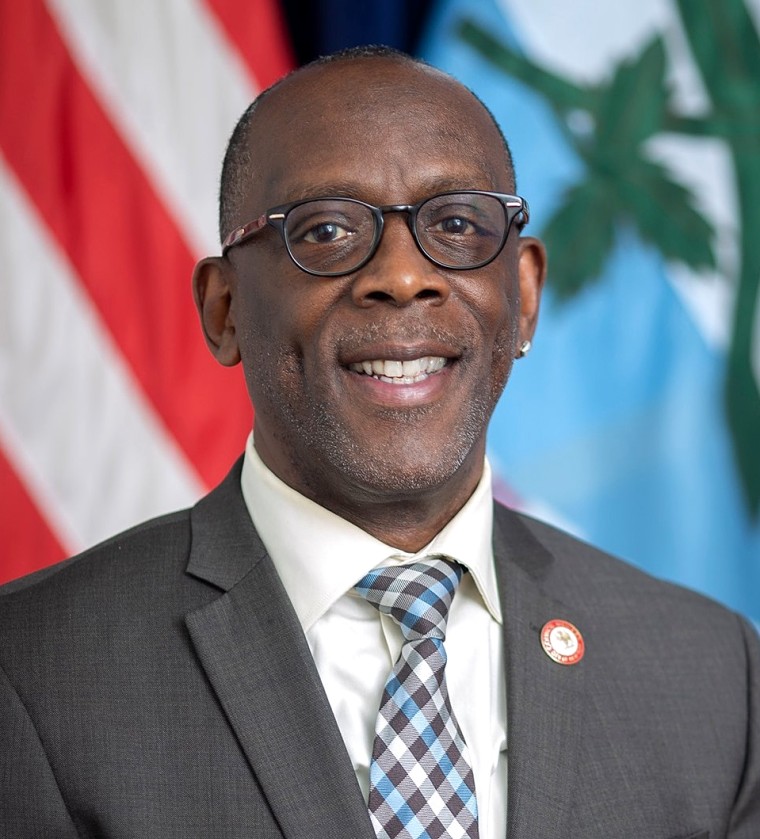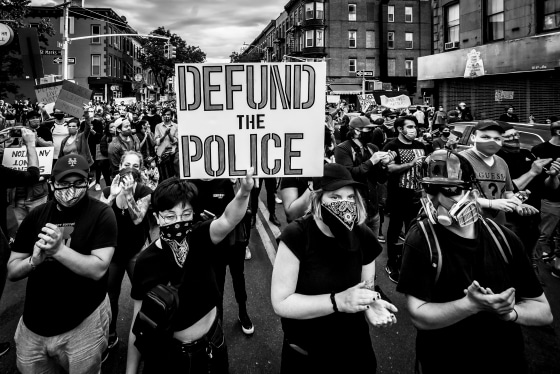In the wake of the killing of George Floyd while in police custody, city councils around the country are struggling with how to improve police departments amid calls to “defund the police.”
Last week Seattle was the focal point of these tensions. After the City Council voted to slash funding and jobs to the Seattle Police Department, its first Black female police chief, Carmen Best, resigned rather than implement the cuts, even though community groups had been the ones to champion her hiring.
You would be hard-pressed to find a Black homeowner in Southeast Queens who agrees that dramatically reducing the size of the police force is a worthwhile endeavor.
In New York City, we heard those same calls this summer as we worked to finalize a budget amid a massive loss of revenue because of COVID-19. While supporters of the defund movement had urged members to vote “no” on any budget that did not include at least $1 billion in cuts to the police, representatives like myself were tasked with striking a balance between public safety and budget cuts. As legislators, it was our fiduciary responsibility to make sure that we passed a responsible budget that also reflected the needs and values of our respective communities.
Going into the budget process, we sought information on how the NYPD could more efficiently deliver services, and we were, in theory, open to cuts far greater than the $1 billion benchmark depending on what we found.
Indeed, long before the protests in response to Floyd’s death, we openly questioned how the city could propose cutting vital youth services while the NYPD budget remained entirely untouched, despite spending having risen 22 percent over the last five years even as crime went down. We were more than willing to cut the NYPD budget as appropriate but pushed back at the harsh rhetoric of the defund movement.
But when the final budget came out with trimmings of around $1 billion to the police department, supporters of the #DefundThePolice movement expressed their continued discontent on social media and ultimately revealed their true intentions: to reduce the size of the police force by any means necessary, even if that meant laying off school safety and traffic agents who are primarily men and women of color compared to higher-ranking officers and detectives who are primarily white.
As chair of the Committee on Civil Service and Labor and former president of a local Amalgamated Transit Union, I make no apologies for preserving the jobs of these hard-working men and women. In the case of school safety agents, their transfer to the city’s Department of Education was included as part of the budget cuts, freeing up funds for community recreation centers and other social services.

I understand the frustrations and concerns regarding policing, as do my constituents in Southeast Queens. We understand all too well the trauma of racist policies that targeted Black and brown bodies designed to meet quotas and fill jail cells. But we are also a community of homeowners who pay taxes and foster intergenerational wealth by investing in our neighborhoods and passing down our legacy to our children. We want a good quality of life just as much as anyone else.
Many City Council members who represented communities most affected by over-policing and stop-and-frisk were not in favor of the defund-the-police rhetoric for this very reason. While it might be easy for some legislators to demand defunding of the NYPD categorically, it is a much more real and nuanced conversation for communities like ours that have legitimate public safety concerns and rely on a working partnership to combat gun violence and other quality-of-life issues.
You would be hard-pressed to find a Black homeowner in Southeast Queens who agrees that dramatically reducing the size of the police force is a worthwhile endeavor. Gun violence, for instance, remains a concern. When we faced a difficult summer last year, the community included the department in conversations on how to invest in our young people and prevent a culture of violence. We worked with the “cure violence” program to prevent retaliatory shootings and other acts of violence.
Of course, a working partnership with our police departments is just one of the tools we can use to make our communities safer, and there are still many precincts within the NYPD that are not nearly as willing to work with the communities they serve as they need to be. As such, it is our responsibility to legislate.
The recently passed chokehold ban, repeal of section 50-a of the legal code shielding most police misconduct records from public scrutiny and a disciplinary matrix for police officers passed in recent months add to the critical work on police reform that the council has done. Through legislation and public discourse, we ended stop-and-frisk, decriminalized possession of small amounts of marijuana, stopped a cycle of summonses and incarceration that targeted young people of color, and most recently disbanded the anti-crime unit.
When I first assumed office, my district had some of the highest numbers of arrests and summonses in the city. The local precinct, representing one of the most affluent Black communities in the country, was placed under federal oversight as a result. Six years later, we no longer see the same level of arrests and harassment of our young people and have successfully shifted the narrative to investment over incarceration.
Going forward, the kinds of investments we want to see in public safety include continued funding for social and human services, the maintenance of the social safety net and other forms of enrichment opportunities. Like any other community, we value public safety. But after being subjected to years of over-policing, we understand that robust investment in social services and youth programs is the greatest tool we have to promote public safety and an enhanced quality of life.
Many difficult decisions had to be made in drawing up this year’s budget, and my colleagues and I were cognizant of that fact throughout the budgeting process. Given the lack of adequate funding from the federal government as the coronavirus devastated New York families and businesses, both the city and state faced significant challenges in maintaining the social safety net New Yorkers have counted on, while also battling worsening food insecurity and unemployment.
We also understood that nearly all city agencies would face cuts, and as co-chair of the council’s Black, Latino and Asian Caucus, I worked tirelessly with my colleagues to negotiate funding to keep programs important to communities of color running, including restoring the Summer Youth Employment Program and massive proposed cuts to the CUNY ASAP program, which fast-tracks students to graduation and predominantly serves students of color.
To diminish the progress and value of our work, as the defund movement threatened to do, would be to silence the voices of communities we represent. We will not allow the work that we’ve done to reform the NYPD and better our communities be eclipsed by a hashtag.



